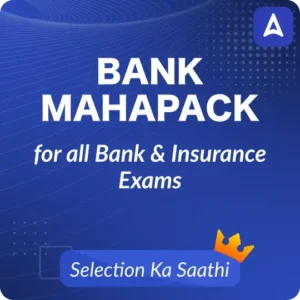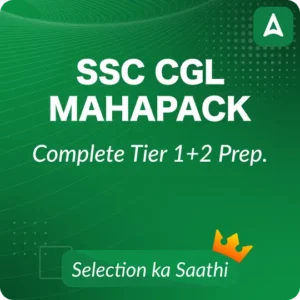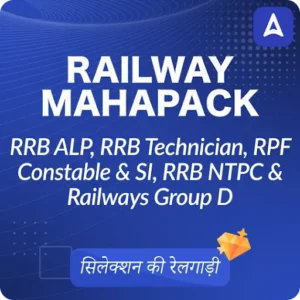Table of Contents
The SEBI Grade A Officer Exam 2025 aims to recruit candidates for Assistant Manager positions through a two-stage online selection process, Phase 1 and Phase 2. To score well in the SEBI Grade A 2025 exam, it is essential for aspirants to understand the SEBI Grade A Syllabus 2025 and the exam pattern thoroughly. This article offers a detailed phase-wise syllabus to help candidates structure their preparation effectively.
SEBI Grade A Syllabus 2025
According to the official notification, SEBI has released the SEBI Grade A Syllabus 2025 for multiple streams, including General, Legal, IT, Engineering (Electrical), Research, and Official Language. The SEBI Grade A selection process consists of three phases, each designed to evaluate candidates’ subject expertise, analytical skills, and professional competency. A detailed breakdown of all three phases is provided below.
- Phase I: Online screening examination consisting of two papers of 100 marks each
- Phase II: Online examination consisting of two papers of 100 marks each
- Phase III: Interview
Each phase of the exam will include Multiple Choice Questions (MCQs), except for the language paper. All question papers (for both phases, except the English test) will be available in both English and Hindi.
SEBI Assistant Manager Syllabus 2025 Overview
To prepare effectively, candidates must have a strong understanding of the SEBI Assistant Manager Syllabus and Exam Pattern. Building a well-organised study plan that covers all important topics is essential. For a brief overview of the SEBI Grade A Exam 2025, refer to the summary table below.
| SEBI Grade A Syllabus 2025 | |
|---|---|
| Organization | Securities And Exchange Board of India |
| Exam Name | SEBI Grade A Recruitment 2025 |
| Post | Officer Grade A (Assistant Manager) |
| Vacancy | 110 |
| Selection Process | Phase I, Phase II, and Interview |
| Exam Pattern | Paper 1 and Paper 2 (MCQ) |
| Exam Language | Hindi/English |
| Official Website | www.sebi.gov.in |
SEBI Grade A Exam Pattern 2025
The SEBI Grade A Exam is held in two phases, Phase 1 and Phase 2. The phase-wise exam pattern below gives a clear overview of the sections, question count, total marks, and time duration for each stage to help candidates plan their preparation effectively.
SEBI Grade A Exam Pattern For Phase I
The SEBI Grade A Phase I Exam consists of two papers: Paper I and Paper II, both comprising Multiple Choice Questions (MCQs). Paper I is common for all streams, while the exam pattern for Paper II differs based on the specific discipline. Each paper carries a total of 100 marks.
| SEBI Grade A Exam Pattern 2025 Phase I | ||||
| Paper | Stream/ Subjects | Max. Marks | Duration | Cut Off |
| Paper I | All Streams: Multiple choice questions on the subjects viz. General Awareness (including some questions related to the Financial Sector of easy to moderate difficulty level), English Language, Quantitative Aptitude, and Test of Reasoning. | 100 | 60 minutes | 30% |
| Paper-II | General Stream: Multiple choice questions on subjects Commerce, Accountancy, Management, Finance, Costing, Companies Act, and Economics | 100 | 40 minutes | 40% |
| Legal, Information Technology, & Official Language stream: Multiple choice questions on Specialized subjects related to the stream | 100 | 40 minutes | 40% | |
| Research Stream:– Multiple choice questions on subjects of Economics, Econometrics, Statistics, Finance, and Commerce. | ||||
| Aggregate Cut off | 40% | |||
SEBI Grade A Exam Pattern For Phase II
Candidates who clear the Phase I cut-off become eligible for the SEBI Grade A Phase II Exam. This stage includes two papers: Paper I and Paper II, each worth 100 marks. Paper I and the General Stream are common for all applicants. Since the scores obtained in Phase II play a crucial role in the final merit list, performing well in this phase is essential.
For candidates who have applied in multiple streams, Paper II will be conducted in various shifts, the timings of which will be intimated in the Hall Ticket.
| SEBI Grade A Exam Pattern 2025 Phase II | |||||
| Paper | Stream/ Subjects | Max. Marks | Duration | Cut Off | Weightage |
| Paper I | All streams: English (Descriptive Test) to test the drafting skills | 100 | 60 minutes | 30% | 1/3rd |
| Paper-II | General Stream: Multiple choice questions on subjects of Commerce, Accountancy, Management, Finance, Costing, and Companies Act and Economics |
100 | 40 minutes | 40% | 2/3rd |
| Legal, and Official Language Stream: Multiple choice questions on Specialized subjects related to the stream. |
100 | 40 minutes | 40% | 2/3rd | |
| Research Stream: Multiple choice questions on subjects of Economics, Econometrics, Statistics, Finance, and Commerce. |
|||||
| Information Technology Stream: Coding Test (Languages: C++/ JAVA/Python) | 100 | 180 minutes | 40% | 2/3rd | |
| Aggregate Cut off | 50% | ||||
SEBI Grade A Exam Pattern For Phase II for Legal Stream
The Exam Pattern for the SEBI Grade A Phase II Legal Stream is given below. It is divided in two papers, Paper I and Paper II. The details of the subjects, total marks, duration, cut off, and the weightage of the sections are mentioned in the table given below.
| Paper | Stream/Subjects | Max. Marks | Duration | Cut Off | Weightage |
|---|---|---|---|---|---|
| Paper I | All streams: English (Descriptive Test) to test drafting skills | 100 | 60 minutes | 30% | 1/3rd |
| Paper II | 70 Multiple-choice questions on a specialised subject | 100 | 60 minutes | 40% | 2/3rd |
| 3 Descriptive Questions (10 marks each) on a Specialized subject (Answers to be typed with the help of the keyboard) Candidates opting to type answers in Hindi may type with the help of: – Inscript keyboard layout – Remington (GAIL) keyboard layout |
60 minutes | ||||
| Aggregate Cut Off | 50% | ||||
SEBI Grade A Syllabus 2025: Subject-wise
Candidates can now review the SEBI Grade A Syllabus 2025 for both phases across all streams, including Legal, Management, General, IT, and Commerce. The detailed marking scheme and subject-wise topics covered in the SEBI Grade A Exam are provided below to help aspirants understand what to expect.
SEBI Grade A Phase 1 Syllabus 2025
SEBI Grade A Syllabus Phase 1 has been mentioned in the table given below for the candidates. This will have MCQs of 100 marks. Paper, I will have four sections:
SEBI Grade A Quantitative Aptitude Syllabus
- Approximations
- Time and Work
- Pipe and Cistern
- Number System
- Simplifications
- Inequalities
- Data Interpretation (Percentage, Ratios),
- Quadratic Equations,
- Average
- Partnerships
- Speed, Distance, and Time
- Probability
- Permutation & Combination
- Wrong Number Series & Missing Number Series
- Problems on Ages
- CI and SI
- Mensuration
- Simplification
SEBI Grade A English Syllabus
- Reading Comprehension
- Error Spotting
- Column based Fillers
- Passages
- Synonym
- Antonyms
- Active and Passive Voice
- Direct and Indirect Speech
- Sentence Connectors
- Paragraph Completion
- Sentence Rearrangement
- Fill in the Blanks
- Idioms & Phrases etc
SEBI Grade A Reasoning Syllabus
- Blood Relations
- Puzzles
- Direction Sense
- Miscellaneous topics (Alphabetical Series)
- Seating Arrangement
- Machine Input-Output
- Syllogisms
- Inequality
- Coding Decoding
- Alpha-Numeric-Symbol Series
- Data Sufficiency
- Number System and Conversions
- Logical Reasoning
- Order and Ranking
SEBI Grade A General Awareness Syllabus
- National and International Current Affairs
- Awards
- Important Days
- Budget
- SEBI-related Current Events
- Financial Sector news
- Summits & Conferences
- Books and Authors
- Science, Technology, and Innovations
SEBI Grade A Syllabus for Phase I & Phase II Paper 2 – General Stream
The SEBI Grade A Paper 2 Syllabus remains the same for both Phase I and Phase II exams. This paper consists of 100 multiple-choice questions for candidates applying under the General Stream. The key topics covered in the SEBI Grade A Paper 2 Syllabus for the General stream are listed below.
SEBI Grade A Syllabus For Legal Stream Phase I & II
The syllabus for Phase I and Phase II for the SEBI Grade A Officer will be common. This paper will be of 100 marks. There will be an aggregate cut-off as well as a paper-wise cut-off. The syllabus will be based on the Specialised Subject chosen by the candidate. The subjects for the specialisation are given below. i.e.
- Legal
- Information Technology
- Engineering: Civil Engineering, Electrical Engineering
- Research Streams
- Official Language Stream
The syllabus for each of the specialised streams is given below.
A. Commerce & Accountancy
| Topics | Details |
|---|---|
| Accounting as an Information System | Understanding accounting as a financial information system. |
| Accounting Standards | Standards related to Depreciation, Inventories, Revenue Recognition, Fixed Assets, Foreign Exchange Transactions, and Investments. |
| Financial Analysis | Cash Flow Statement, Fund Flow Statement, Financial Statement Analysis, and Ratio Analysis. |
| Share Capital Transactions | Accounting for Share Capital, Bonus Shares, and Rights Shares. |
| Employee Benefits | Accounting for Employee Stock Options (ESOPs) and Buy-back of Securities. |
| Company Final Accounts | Preparation and presentation of final company accounts. |
B. Management
| Topics | Details |
|---|---|
| Principles of Management | Nature, scope, and functions – Planning, Organizing, Staffing, Directing, and Controlling. |
| Managerial Role | Role and responsibilities of a manager in an organization. |
| Leadership | Leadership tasks, styles, theories, and difference between successful and effective leaders. |
| Human Resource Development (HRD) | Concept, objectives, and goals of HRD. |
| Motivation & Morale | Theories of motivation, ways to motivate employees, factors affecting morale, and the role of incentives. |
| Communication | Process, channels (oral/written, verbal/non-verbal), barriers, and the role of Information Technology in communication. |
C. Finance
| Section | Details |
|---|---|
| Financial System | Role and functions of regulatory bodies in the financial sector. |
| Financial Markets | Overview of Primary and Secondary markets – Forex, Money, Bond, and Equity markets, including functions, instruments, and recent developments. |
| Derivatives | Basics of Forwards, Futures, and Swaps. |
| Recent Developments | Latest trends and reforms in the financial sector. |
| Financial Inclusion | Use of technology for promoting financial inclusion. |
| Sources of Finance | Alternate sources, public-private partnerships, and cost-benefit concepts. |
| Taxation & Fiscal Policy | Overview of direct and indirect taxes, GST, Finance Commission, FRBM Act, and Fiscal Policy. |
| Inflation | Meaning, causes, effects, and control; WPI and CPI concepts and trends. |
D. Costing
| Topics | Details |
|---|---|
| Introduction | Concept, objectives, and scope of Cost and Management Accounting. |
| Methods of Costing | Unit, Job, Batch, Contract, Process/Operation, and Service Sector Costing. |
| Cost Control & Analysis | Standard Costing, Marginal Costing, Budgeting, and Budgetary Control. |
| Lean System & Innovation | Lean System, Just-in-Time (JIT), Kaizen Costing, 5S, Total Productive Maintenance (TPM), Cellular Manufacturing, Six Sigma, and Business Process Re-engineering (BPR). |
E. Companies Act
| Topics | Details |
|---|---|
| Important Chapters | Chapters III, IV, VIII, X, XI, XII, and XXVII of the Companies Act, 2013. |
F. Economics
| Topics | Details |
|---|---|
| Microeconomics | Demand and Supply, Market Structures, National Income – Concepts and Measurement. |
| Macroeconomic Theories | Classical and Keynesian approaches, Consumption and Investment Functions, Multiplier and Accelerator, IS-LM Model. |
| Inflation & Business Cycles | Inflation causes and remedies, Phillips Curve, and Business Cycles. |
| External Sector | Balance of Payments and Foreign Exchange Markets. |
| Economic Policies | Overview of Monetary Policy, Fiscal Policy, and Non-Banking Financial Institutions (NBFIs). |
SEBI Grade A Legal Stream Syllabus
Candidates can check the topics mentioned below for the SEBI Grade A Syllabus for Legal posts. Questions will be asked from these topics only. Candidates can arrange and plan their study materials according to this list for both Phase 1 and Phase 2.
SEBI Grade A Legal Phase 1 Syllabus
| Sl. No. | Subject / Topics | Weightage |
|---|---|---|
| 1 | Constitution of India – Preamble, Part I, Part III, Part IV, Part IVA, Part V, Part VI, Part VIII, Part IXA, Part IXB, Part XI | 20% |
| 2 | Contract Law – Indian Contract Act, 1872; Sale of Goods Act, 1930; Indian Partnership Act, 1932; Specific Relief Act, 1963 | 25% |
| 3 | Code of Civil Procedure, 1908 – Part I, II, III, IV, V, VII, and Schedule I | 25% |
| 4 | Transfer of Property Act, 1882 – Chapter III, IV, and V | |
| 5 | Arbitration and Conciliation Act, 1996 – Part I | |
| 6 | The Limitation Act, 1963 | |
| 7 | Administrative Law | 20% |
| 8 | Jurisprudence and Interpretation of Statutes | |
| 9 | Important Latin Terms and Maxims | |
| 10 | Law of Torts and Consumer Protection Act, 2019 | 10% |
SEBI Grade A Legal Phase 2 Syllabus
| Sl. No. | Subject / Topics | Weightage |
|---|---|---|
| 1 | Criminal Law – Bharatiya Nyaya Sanhita, 2023 (Chapters I, II, III, IV, VII, XII, XIV, XVII, XVIII, XIX); Bharatiya Nagarik Suraksha Sanhita, 2023 | 30% |
| 2 | Law of Evidence – Bharatiya Sakshya Adhiniyam, 2023 | |
| 3 | Corporate Laws – Companies Act, 2013 (Chapters I, II, III, IV, V, VI, VII, VIII, IX, X, XI, XII, XIII, XIV, XV, XVI, XVIII, XX, XXVII, XXVIII); Limited Liability Partnership Act, 2008; Insolvency and Bankruptcy Code, 2016 (Part I & II) | 30% |
| 4 | Securities Laws – Securities Contracts (Regulation) Act, 1956; Securities and Exchange Board of India Act, 1992; Depositories Act, 1996; SEBI (Prohibition of Fraudulent and Unfair Trade Practices Relating to Securities Market) Regulations, 2003; SEBI (Substantial Acquisition of Shares and Takeovers) Regulations, 2011; SEBI (Prohibition of Insider Trading) Regulations, 2015 | 40% |
SEBI Grade A IT Syllabus
Check the syllabus for the SEBI Grade A Information Technology exam:
SEBI Grade A IT Phase 1 Syllabus
| Sr. No. | Topic | Details | Weightage (%) |
|---|---|---|---|
| 1 | Database Concepts | ER‐model, Relational model: relational algebra, tuple calculus, Integrity constraints, normal forms, File organisation, Indexing (e.g., B and B+ trees), Transactions and concurrency control | 10 |
| 2 | SQL Queries | Select, View, Truncate, Delete, Update, Alter, Inner Join, Different types of Outer Joins, Use of aggregate functions, Union, Intersection, Except, IN and EXISTS clauses, Nested Queries | 10 |
| 3 | Programming Concepts (Java / C / C++) | Program control (iteration, recursion, Functions), Scope of variables, Binding of variables & functions, Parameter passing, Functional and Logic Programming, OOPS Concepts, Inheritance, Class and Object, Constructors, Functions, Exception Handling | 30 |
| 4 | Data Analytics Languages (Python / R) | Regex, Slicing, Data reshaping, Dataframes, Dictionaries and Sets, File Management, Classes and Functions, Data Mining, Lists, Importing and Exporting Data, Charts and Graphs | 10 |
| 5 | Algorithms for Problem Solving | Tree and graph traversals, Connected components, Spanning trees, Shortest paths, Hashing, Sorting, Searching, Design techniques (Greedy, Dynamic Programming, Divide-and-conquer) | 10 |
| 6 | Networking Concepts | ISO/OSI stack, LAN Technologies (Ethernet, Token Ring), TCP/UDP, IP, Basic concepts of switches, gateways, and routers, Application layer protocols (DNS, SMTP, POP, FTP, HTTP), Firewalls | 10 |
| 7 | Information & Cyber Security Concepts | Cyber Attacks, Software Development Security, Network Security, Authentication, CIA – Confidentiality, Integrity and Availability, Network Audit, Systems Audit | 10 |
| 8 | Data Warehousing | Data Extraction, Data Cleaning, Data Transformation, Data Loading, Metadata, Data Cube, Data Mart, Data Models | 5 |
| 9 | Shell Programming | Shell Scripting Basics, Shell Variables, Shell Script Arguments, If Statement, Loop, Return, Basic UNIX commands | 5 |
| Total | 100 |
SEBI Grade A IT Phase 2 Syllabus
| S. No. | Topic | Concept | Language to test concepts | Weightage |
| 1 | Algorithms | Sorting, Searching, Greedy Algorithms, Dynamic Programming, Backtracking, Divide and Conquer, Pattern Searching |
C++/JAVA/Python | 40 |
| 2 | Data Structure | Array, Linked List, Stack, Queue, Binary Tree, Indexing, Binary Search Tree, Heap, Hashing, Matrix |
C++/JAVA/Python | 40 |
| 3 | String Manipulation | Length, Substring, Regex, Search | C++/JAVA/Python | 20 |
| Total | 100 | |||
SEBI Grade A Research Stream Syllabus (Phase 1)
- Economics: Demand and Supply, Market Structures, National Income, Determination of output and employment, Investment Function, Multiplier and Accelerator, Demand and Supply for Money, IS-LM,
Inflation and Phillips Curve, Business Cycles, Inflation, Monetary and Fiscal Policy, Non-banking Financial Institutions. - Public Economics: Public Goods, Tax & Non-Tax Revenue, Direct & Indirect Taxes, Progressive and non-Progressive Taxation, Incidence and Effects of Taxation, Public expenditure, Public Debt, Public Budget and Budget Multiplier
- Statistics and Econometrics: Measures of Central Tendency & Dispersion, Correlation, Sampling methods, Sampling Distribution, Statistical Inferences, Hypothesis testing, Regression Analysis.
- International Economics: Balance of Payments, Foreign Exchange Markets, Role of International Financial Institutions: BIS, IOSCO, IMF & World Bank
- Financial Markets: Asymmetric Information, Market Model, Market Efficiency, Primary Market, Secondary Market, Commodity Markets, Mutual Funds, Stock Exchanges, Depositories, Clearing Corporations, Credit Rating Agencies, and Corporate Debt Market. Forwards, Futures, Options, Hedging, Speculation and Arbitrage.
SEBI Grade A Research Stream Syllabus (Phase 2)
| Sr. No. | Topic | Details | Weightage (%) |
|---|---|---|---|
| 1 | Economics | Economics: Demand and Supply, Market Structures, National Income, Determination of Output and Employment, Investment Function, Multiplier and Accelerator, Demand and Supply for Money, IS–LM, Inflation and Phillips Curve, Business Cycles, Inflation, Monetary and Fiscal Policy, Nonbanking Financial Institutions. Public Economics: Public Goods, Tax & Non-Tax Revenue, Direct & Indirect Taxes, Progressive and Non-Progressive Taxation, Incidence and Effects of Taxation, Public Expenditure, Public Debt, Public Budget and Budget Multiplier. International Economics: Balance of Payments, Foreign Exchange Markets, Role of International Financial Institutions: BIS, IOSCO, IMF & World Bank. |
25 |
| 2 | Financial Markets | Financial Markets: Asymmetric Information, Market Model, Market Efficiency, Primary Market, Secondary Market, Commodity Markets, Mutual Funds, Stock Exchanges, Depositories, Clearing Corporations, Credit Rating Agencies, Corporate Debt Market. Forwards, Futures, Options, Hedging, Speculation and Arbitrage. | 50 |
| 3 | Statistics | Statistics and Econometrics: Measures of Central Tendency & Dispersions, Correlation, Sampling Methods, Sampling Distribution, Statistical Inferences, Hypothesis Testing, Regression Analysis. | 25 |
| Total | 100 |
SEBI Grade A Syllabus for Official Language
- भारत सरकार की राजभाषा नीति से सम्बंधित प्रश्न (Official Language Policy of the Govt. of India)
- हिन्दी से अंग्रेजी अनुवाद [शब्द / वाक्यांश/ वाक्य / Terms / Phrases / Sentences]
- अंग्रेजी से तिन्दी अनुवाद [शब्द / वाक्यांश / वाक्य / Terms / Phrases / Sentences]
- हिन्दी से अंग्रेजी – विधिक शब्दावली (Legal Terminology)
- अंग्रेजी से हिन्दी – विधिक शब्दावली (Legal Terminology)
- हिन्दी से अंग्रेजी – प्रशासनिक/ बैंकिंग/ पूंजी बाज़ार संबंधी शब्दावली (Administrative / Banking / Capital Market Terminology)
- अंग्रेजी से हिन्दी – प्रशासनिक/ बैंकिंग/ पूंजी बाज़ार संबंधी शब्दावली (Administrative / Banking / Capital Market Terminology)
SEBI Grade A Electrical Engineering Stream Syllabus
The syllabus for Engineering stream is Common for both phases:
Electrical Materials
- Electrical engineering materials, crystal structures and defects.
- Ceramic, insulating, magnetic, ferrites, ferro-magnetic materials and components.
- Basics of solid-state physics, conductors, and photoconductivity.
- Basics of nanomaterials and superconductors.
Electric Circuits and Fields
- Circuit elements, network graph, KCL, KVL, node and mesh analysis.
- Ideal sources, Thevenin, Norton, Superposition, and Maximum Power Transfer theorems.
- Transient response of DC & AC networks, sinusoidal steady-state analysis.
- Two-port networks, three-phase circuits, magnetically coupled circuits.
- Gauss theorem, electric field & potential, Ampere’s & Biot-Savart laws.
- Inductance, dielectrics, capacitance, Maxwell’s equations.
Electrical and Electronic Measurements
- Principles of measurement: accuracy, precision, and standards.
- Bridges, potentiometers, moving coil/iron instruments, and dynamometers.
- Measurement of voltage, current, power, energy, and power factor.
- Instrument transformers, digital voltmeters, multimeters, Q-meters, oscilloscopes.
- Basics of sensors, transducers, data acquisition systems, error analysis.
Computer Fundamentals
- Number systems, Boolean algebra, and arithmetic functions.
- CPU, I/O & memory organisation, peripheral devices.
- Data representation, programming basics, OS fundamentals, networking, virtual memory, file systems.
Basic Electronics Engineering
- Semiconductor diodes, transistors (BJT, FET, MOSFETs), characteristics.
- Transistor amplifiers, equivalent circuits, frequency response.
- Oscillators, feedback amplifiers, basic circuit designs.
Analog and Digital Electronics
- Operational amplifiers: characteristics & applications.
- Combinational & sequential logic circuits, multiplexers, multivibrators.
- A/D and D/A converters, active filters, and microprocessor basics.
- Analogue communication: modulation, demodulation, noise, SNR.
- Digital communication: sampling, quantising, coding, multiplexing, power line carrier systems.
Systems and Signal Processing
- Continuous & discrete-time signals, shifting & scaling operations.
- Linear, time-invariant, causal systems, Fourier series & transforms, Laplace transforms, Z-transforms.
- Discrete Fourier Transform, FFT, convolution, discrete cosine transform, FIR/IIR filters.
Control Systems
- Feedback principles, transfer functions, block diagrams, signal flow graphs.
- Steady-state errors, stability analysis, transient & frequency response.
- Routh-Hurwitz, Nyquist, Bode plots, root loci, compensation techniques.
- State-space models, controllability, observability, PID & industrial controllers.
Electrical Machines
- Transformers (single & three-phase), DC machines, induction machines, synchronous machines.
- Performance characteristics, starting & speed control, armature reaction, parallel operation.
- Servo & stepper motors: principles, characteristics, applications.
Power Systems
- Power generation, transmission, and distribution concepts.
- Transmission line models, insulation, corona, R & C systems, fault analysis, protection systems.
- Circuit breakers, HVDC, FACTS, distributed generation, solar & wind power, smart grids, power economics.
Power Electronics and Drives
- Power diodes, transistors, thyristors, triacs, GTOs, MOSFETs, IGBTs.
- Rectifiers, choppers, inverters, DC-DC & DC-AC converters, resonant converters.
- Adjustable speed drives, high-frequency inductors/transformers, and power supplies.
SEBI Grade A Electrical Engineering Stream Syllabus
Building Materials
- Stone, lime, glass, plastics, steel, FRP, ceramics, aluminium, fly ash, timber, bricks, aggregates.
- Cement: types, composition, properties, specifications, testing.
- Lime & cement mortars, concrete: properties, tests, mix design & proportioning.
Solid Mechanics
Elastic constants, stress, strain, Mohr’s circle, elastic theories, principal stresses, bending, shear, torsion.
Structural Analysis
- Strength of materials, stresses & strains, bending moments, shear forces.
- Determinate & indeterminate structures, trusses, beams, plane frames.
- Influence lines, unit load method, vibrations, suspended cables, CAD applications.
Design of Steel Structures
- Working stress methods, tension & compression members, beams, columns, built-up sections, girders, and industrial roofs.
- Ultimate load design principles.
- Design of Concrete and Masonry Structures
- Limit state design: bending, shear, axial compression, combined forces.
- Beams, slabs, lintels, foundations, retaining walls, tanks, staircases.
- Pre-stressed concrete design, earthquake-resistant structures, and masonry design.
Construction Practice, Planning and Management
- Construction planning, equipment, site investigation, estimation, and project management tools.
- Tendering, contract management, quality control, labor safety, productivity, operation costs.
Flow of Fluids, Hydraulic Machines, Hydro Power
- Fluid mechanics: properties, dimensional analysis, open channel & pipe flow, viscosity, boundary layer, drag, lift.
- Hydraulic machines: pumps, air vessels, turbines, powerhouses, performance analysis.
Hydrology and Water Resources Engineering
- Hydrological cycle, groundwater, well hydrology, streams, floods, droughts, reservoirs.
- Water resources: multipurpose uses, river basins, irrigation, water demand, canals, dams, energy dissipaters, river training.
Environmental Engineering
- Water Supply: Sources, standards, treatment, distribution networks.
- Wastewater: Domestic & industrial sewage management, treatment plants, sludge management.
- Solid Waste Management: Sources, planning, disposal, utilization.
Air & Noise Pollution: Concepts and methodologies.
- Geo-technical & Foundation Engineering
- Soil exploration, properties, tests, permeability, consolidation, shearing resistance, earth pressure theories.
- Foundations: types, selection, bearing capacity, settlement, shallow & deep foundation design, slope stability, dams, retaining structures.
Surveying and Geology
- Surveying: Methods, instruments, measurement of distances, elevation, directions, GPS, photogrammetry, remote sensing, layout for civil works.
- Geology: Basic engineering geology and project applications.
Transportation Engineering
- Highways: Planning, construction, geometric design, traffic surveys, flexible & rigid pavements.
- Tunneling: Alignment, construction, drainage, ventilation.
- Railways: Terminology, planning, design, maintenance.
- Harbours & Airports: Terminology, layout, planning, design.
SEBI Grade A Syllabus For Phase II – Paper I (English Writing)
This section is common for all candidates appearing in the SEBI Grade A Phase II Exam. It is an English Descriptive Test designed to evaluate candidates’ drafting and writing abilities. The paper carries 100 marks and must be completed within 60 minutes. It assesses writing skills, clarity of expression, and comprehension through tasks such as essay writing, précis writing, and reading comprehension.
SEBI Grade A Interview
- The candidates who will be successful in Phase I and Phase II of the SEBI Grade A Officer Recruitment will be called to appear for the Interview. Candidates equalling 3 times the number of vacancies shall be shortlisted, in order of merit, for Phase III, i.e. the Interview.
- The shortlisted candidate may opt for the interview in either Hindi or English. The weightage of marks obtained in Phase II will be 85%, while marks obtained in the interview shall be given a weightage of 15%.
- Thus, the selection will be made on the marks secured in Phase II and the Interview for the final selection of the candidates as SEBI Grade A Officer.
SEBI Grade A Phase I Marking Scheme
- There shall be a negative marking of 1/4th of the marks assigned to the question for every incorrect answer.
- There shall be a cut-off of a minimum of 30% for Paper 1 (no sectional cut-off shall be there)
- Candidates would need to secure a separate cut-off in each paper, as mentioned above, as well as an aggregate cut-off mark of 40% in the Phase I exam to be shortlisted for Phase II
- Candidates have to secure separate cut-offs in each paper, as mentioned above as well as aggregate cut-off marks of 40% in the Phase I exam to be shortlisted for Phase II.
SEBI Grade A Phase II Marking Scheme
- There shall be a negative marking of 1/4th of the marks assigned to the question for Paper 2 in Phase II (except IT stream, for which details shall be informed in due course).
- There shall be a cut-off of a minimum of 30% for Paper 1 and a cut-off of a minimum of 40% for Paper 2 in Phase II.
- Candidates would need to secure separate cut-offs in each paper as mentioned above as well as aggregate cut-off marks of 40% in the Phase II exam (weightage of 1/3rd for Paper 1 and 2/3rd for Paper 2) to be shortlisted for Phase III.
Tips to Prepare for SEBI Grade A 2025 Exam
Here are some of the tips that the candidates can use to pass the SEBI Grade A Exam. Follow these tips to get through the examination process.
- Understand the SEBI Grade A exam pattern and marking scheme.
- Analyse the syllabus and create a study plan. Gather the best SEBI Grade A study material for each subject.
- Allocate time wisely based on subject weightage.
- Take regular mock tests and solve SEBI Grade A Previous Year Papers.
- Stay updated with current affairs related to finance.
- Focus on securities market topics in depth.
- Revise regularly and create concise notes.
- Join study groups or online forums for discussions.
| Important Links Related To SEBI Grade A 2025 | |
| SEBI Grade A Salary | SEBI Grade A Study Material |
| SEBI Grade A Online Coaching | SEBI Grade A Previous Year Paper |

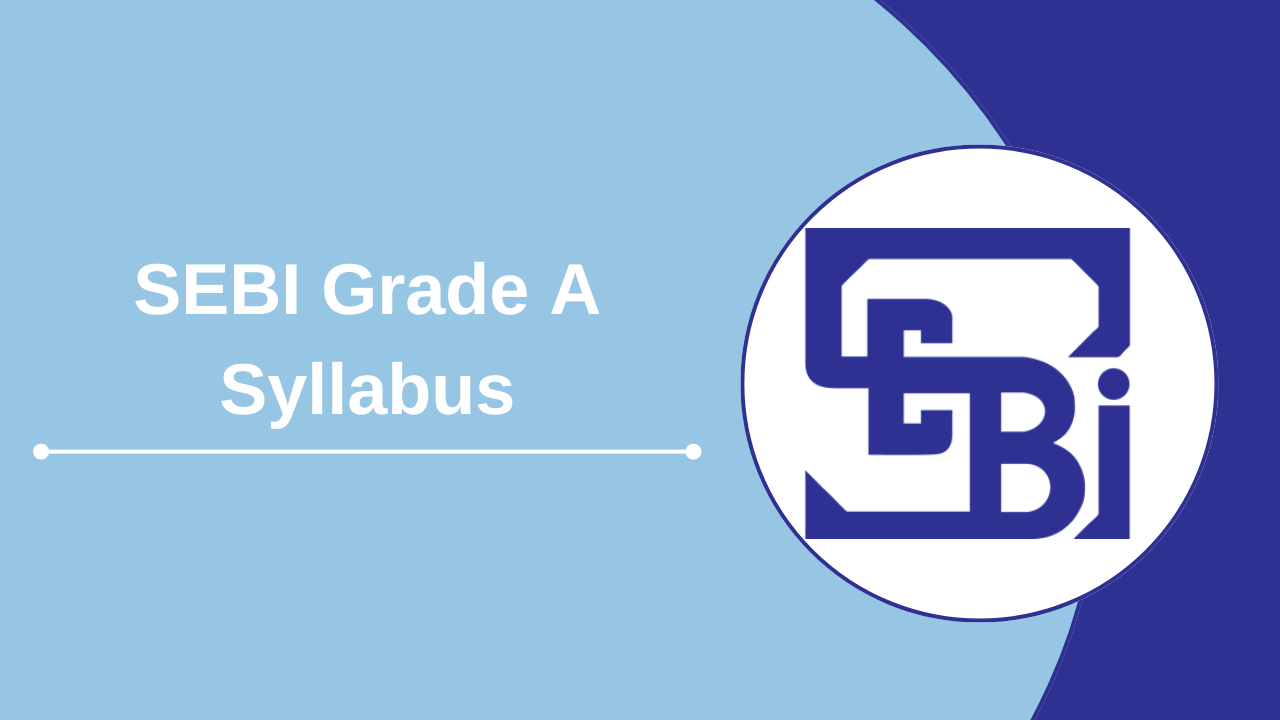
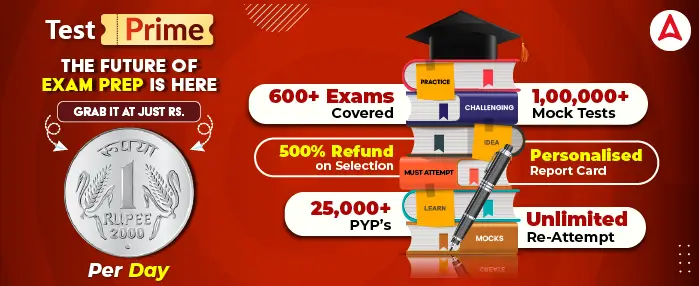
 RRB Group D Syllabus 2025, Subject-Wise ...
RRB Group D Syllabus 2025, Subject-Wise ...
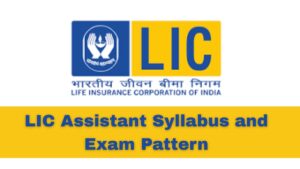 LIC Assistant Syllabus 2026, Exam Patter...
LIC Assistant Syllabus 2026, Exam Patter...
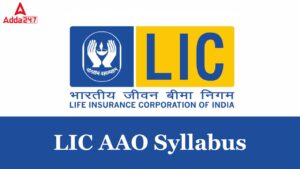 LIC AAO Syllabus 2026, Exam Pattern for ...
LIC AAO Syllabus 2026, Exam Pattern for ...

